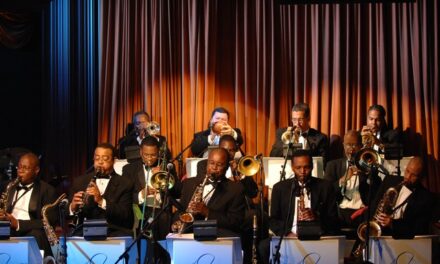The Carolina Summer Music Festival is an outgrowth of the Carolina Chamber Symphony, founded 20 years ago under the leadership of Robert Franz, currently Music Director of the Boise Symphony and Associate Director of the Houston Symphony. The Summer Music Festival has become the largest part of the CCS, thanks to the tireless efforts of the three musicians who run it, flutist Lisa Ransom, violinist Jacqui Carrasco and horn-player Joe Mount. And contrary to many festivals around the country, the Carolina Summer Music Festival engages only artists from the Triad area which has an abundance of artistic talent.
Billed as a “Romantic Salon Afternoon Concert,” it was played on the stage of the acoustically dry lecture hall rather than the magnificent formal salon of the Reynolda House. The placing of the piano near the back wall of the small stage added to its dominance throughout the concert, despite the magnificent control of pianist Peter Kairoff. A music faculty member of Wake Forest University, Kairoff was given a workout as he played the entire concert, alternating with two other artists, as well as playing two “sets” of his own. Kairoff has recorded three CDs of early American music and his influence on the choice of the program is clear – all but the closing Brahms sonata were by American composers born between 1850 and 1870 and represent four of the six composers called “the Boston Six” (lacking Arthur Foote and John Knowles Paine).
Glenn Siebert is the quintessential lyric tenor with a lovely warm tone and the clearest enunciation this writer has ever heard. Of the opening set of four poems by diverse poets put to music by George Whitefield Chadwick (1854-1931), I was most moved by the second, “When Stars Are in the Quiet Skies.”
We had a chance to deepen our experience of Chadwick (who in his epoch was best known as a composer for orchestra) with three works with quasi-Chopinesque titles, “In the Canoe” (viz. Barcarole) and two Waltzes, one in F Minor with a lovely major middle section and the closing A-flat Waltz which held a charm of its own. Kairoff was clearly immersed in Chadwick’s world as he delighted us with these tantalizing discoveries.
Edward MacDowell (1860-1908) was trained in Frankfurt after having studied in Boston. While there he met his future wife, a pianist who came from a family of means, which allowed her, after the premature death of her husband, to establish an artists’ colony in memory of her husband. A gifted poet as well as composer, MacDowell often set his own texts to a music that is very romantic – one could have mistaken the first song (Opus 47, No. 1) for a ballad by Richard Rodgers! The four songs that comprise the Opus 56 are lovely and nostalgic and suit Glenn Siebert’s clear voice to a tee, especially the song describing the dialogue between a swan and a lily.
Horatio Parker (1863-1919), who at one time studied with G. W. Chadwick but also with Josef Rheinberger in Munich, was clearly influenced by the works of the 19th century piano greats – one could almost place the middle section on the Nocturne, Opus 19, No. 4 in Robert Schumann’s Kinderszenen (Scenes from Childhood). And the “Valse Gracile,” Op. 49, No. 3 was redolent of Chopin, whimsical but rhythmically complex. Kairoff polished off these three works of Parker with panache and flair.
Amy Cheney Beach has become popular in recent years, and for just cause – she is quite original and much less derivative than her colleagues from Boston, perhaps because her parents rejected the advice that she train in Europe. Her Rendezvous was indeed a meeting, for it introduced violinist and Wake Forest University music faculty member, Jacqui Carrasco to the piano-tenor duo of Kairoff and Siebert.
Starting in the vein of French impressionism with arpeggios running up and down the piano accompanying the muted violin, the voice enters mysteriously while the listener wonders who meets whom and when. Each verse becomes simpler in its accompaniment, and each ends with the same refrain, “But one more month so soon/ Wait for me, June, / My June!” This is an amazing song and stands out from the rest of the program by its contemporary feel.
After a short break, Ms. Carrasco joined forces with Mr. Kairoff for a touching performance of Johannes Brahms’s Sonata in G for Violin and Piano, Op. 78, a rhapsodical work I have listened to often since childhood for its ability to bring peace and repose. Again the dry acoustics of the lecture hall conspired against the duo and exaggerated the sound of the piano to the detriment of the violin – perhaps closing the piano entirely might have helped. Carrasco played her part with wisdom and feeling, reserving the climax for the right moment. The slow second movement (Adagio) starts in a distant key (E-flat) and moves even farther into the key of B minor. A dreamy weaving episode in the violin over an E-flat pedal point brings the movement to a satisfying close.
The third movement begins much like the first – but in a minor key! Much play with diminished chords and tritones leads to a second theme in D minor with a mumbling off-beat accompaniment that eventually leads to… the second movement theme, in E-flat! Despite its tenderness and nostalgia, this is a major masterpiece of mature Brahms, satisfyingly delivered by two mature artists. Bravo to both Carrasco and Kairoff!











